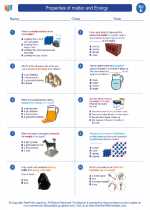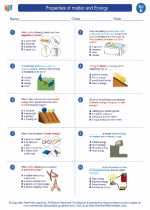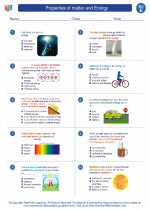Properties of matter and Energy -> boyle's law
Boyle's Law
Boyle's Law is a fundamental principle in the field of gas laws, named after the 17th-century scientist Robert Boyle. It describes the relationship between the pressure and volume of a gas at constant temperature. The law can be stated as:
At constant temperature, the volume of a given amount of gas is inversely proportional to its pressure.
This can be mathematically expressed as:
P1 * V1 = P2 * V2
Where P1 and V1 are the initial pressure and volume, and P2 and V2 are the final pressure and volume of the gas.
Understanding Boyle's Law
To understand Boyle's Law, let's consider an example. If we have a gas confined in a container and we decrease the volume of the container, the gas particles will have less space to move around, leading to an increase in pressure. This demonstrates the inverse relationship between pressure and volume as described by Boyle's Law.
Study Guide
- What is Boyle's Law?
- What is the mathematical expression of Boyle's Law?
- Can Boyle's Law be applied to any gas?
- What happens to the pressure of a gas if its volume is decreased at constant temperature?
Boyle's Law describes the inverse relationship between the pressure and volume of a gas at constant temperature.
The mathematical expression of Boyle's Law is P1 * V1 = P2 * V2, where P1 and V1 are the initial pressure and volume, and P2 and V2 are the final pressure and volume of the gas.
Yes, Boyle's Law is applicable to any gas as long as the temperature remains constant.
If the volume of a gas is decreased at constant temperature, the pressure of the gas will increase, as per Boyle's Law.
Understanding Boyle's Law is essential in comprehending the behavior of gases under varying conditions of pressure and volume. Mastery of this concept is crucial in fields such as chemistry, physics, and engineering.
Remember to practice problems related to Boyle's Law to enhance your understanding of this fundamental gas law.
.◂Science Worksheets and Study Guides Fifth Grade. Properties of matter and Energy

 Worksheet/Answer key
Worksheet/Answer key
 Worksheet/Answer key
Worksheet/Answer key
 Worksheet/Answer key
Worksheet/Answer key
 Vocabulary/Answer key
Vocabulary/Answer key
 Vocabulary/Answer key
Vocabulary/Answer key
